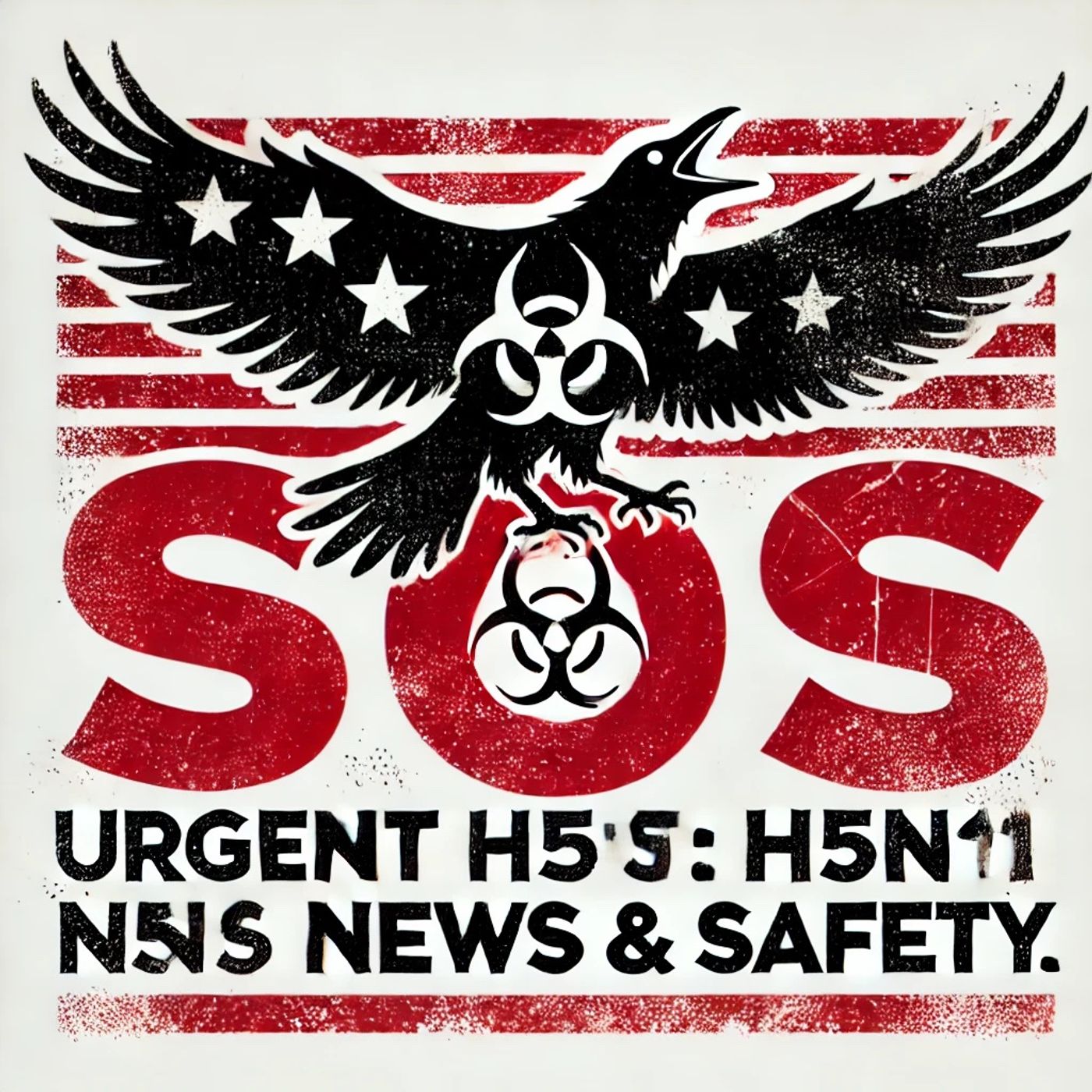Podcast Episode Details
Back to Podcast Episodes
Bird Flu Alert: H5N1 Spreads in UK and US Dairy Herds, Experts Urge Caution for Workers and Residents
Bird Flu SOS: Urgent H5N1 News & Safety
Opening
This is Bird Flu SOS: Urgent H5N1 News & Safety. Today’s urgent update: authorities in the UK confirmed H5N1 in commercial poultry near Lifton, West Devon, on August 8, 2025, triggering 3 km protection and 10 km surveillance zones and full culling on site, a clear sign of active spread in Europe, according to the UK government’s Animal and Plant Health Agency. In the U.S., California reports reinfections on 43 previously cleared dairies, re-quarantined as of August 1, 2025, per the California Department of Food and Agriculture.
Expert quotes and severity
According to CDC’s H5 bird flu situation summary (updated August 1, 2025), H5N1 remains widespread in wild birds and continues to cause outbreaks in poultry and U.S. dairy cows. CDC states the current public health risk is low, but it is monitoring closely with states and leveraging national flu surveillance. CDC’s August 4, 2025 global summary notes 26 human H5N1 infections worldwide this year, including 11 deaths, all linked to direct exposure to birds or other animals, with no confirmed person-to-person spread. Johns Hopkins Bloomberg School of Public Health adds that U.S. reporting has shifted to monthly as infections declined, but cautions the outbreak is not over. USDA-led response efforts in the U.S. include enhanced biosecurity and a $1 billion strategy supporting diagnostics and vaccination research, reported by Contagion Live.
What’s new and why it matters
The UK detection with new control zones underscores continued geographic spread in poultry. The California dairy reinfections show that herds can test negative, then become positive again, warranting renewed quarantines and sustained surveillance. These developments mean exposure risk remains for people working with infected birds or cattle, even as general public risk stays low.
Immediate action steps if you are in or near affected zones
- Follow local orders. In UK control zones, adhere to movement restrictions and biosecurity rules posted by authorities.
- Avoid contact with sick or dead birds or mammals. Do not touch, move, or attempt to rescue affected animals; report them to local animal health authorities.
- For dairy and poultry workers: wear eye protection, gloves, and properly fitted respirators or masks when around potentially infected animals or raw milk; change clothes and boots before returning home; wash hands thoroughly.
- Do not consume raw milk or undercooked eggs or poultry. Pasteurization and thorough cooking reduce risk.
- Employers should implement entry/exit hygiene stations, dedicated clothing, and daily symptom checks for workers with exposures.
Warning signs that require emergency response
Seek urgent medical care if, after exposure to sick or dead birds, poultry facilities, or dairy herds, you develop any of the following within 10 days:
- High fever, cough, sore throat, shortness of breath, or chest pain.
- Red, painful eyes or conjunctivitis.
- Severe fatigue, confusion, or seizures.
- Persistent vomiting or diarrhea with dehydration.
Tell clinicians about your recent animal or raw milk exposure so they consider antiviral treatment and testing aligned with CDC guidance.
Resources for emergency assistance
- United States: Contact your state or local health department; clinicians can consult CDC for testing guidance. For animal concerns, check USDA APHIS updates and your state agriculture department. In California, suspected livestock illness can be reported via the CDFA sick livestock line at 1-866-922-2473.
- United Kingdom: Follow GOV.UK disease control zone guidance and contact your local APHA office for reporting sick or dead birds.
Context without panic
According to CDC, the overall public health risk remains low and there is no confirmed sustained human-to-human transmission.
Published on 1 week, 5 days ago